A well-organized walk-in pantry can revolutionize your kitchen experience. Not only does it make finding ingredients a breeze, but it also helps reduce food waste and keeps your space looking clean and tidy. Whether you have a compact pantry or a spacious one, these 20 smart Walk In Pantry Organization Ideas will help you maximize every inch of available space.
Walk In Pantry Organization Ideas
Jump To:
1. Use Clear Storage Containers
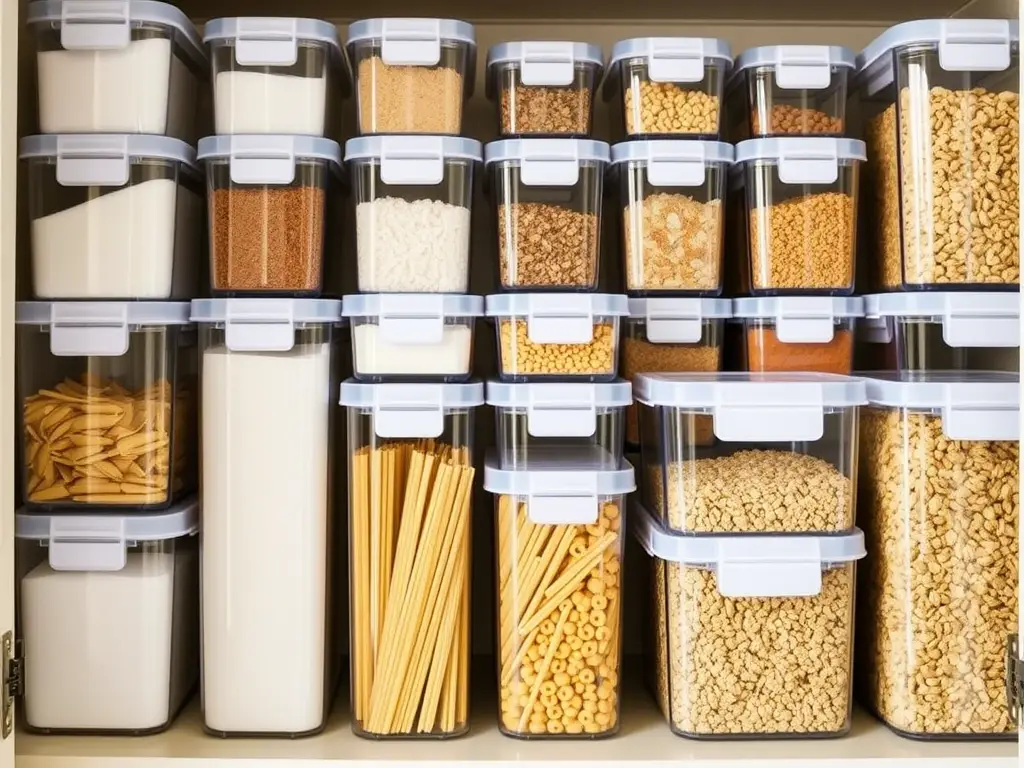
Transparent storage containers are a game-changer when it comes to pantry organization. They allow you to see exactly what’s inside without having to open multiple jars or boxes. This prevents duplicate purchases and reduces the likelihood of items expiring unnoticed. Opt for airtight containers to keep dry goods like flour, sugar, pasta, and cereals fresh for longer periods. Bonus: Uniform containers create a sleek, cohesive look that enhances the aesthetic appeal of your pantry.
2. Label Everything
Labels are essential for maintaining an organized pantry. By clearly marking bins, jars, baskets, and shelves, you ensure that everything has its designated spot. A label maker is ideal for creating professional-looking labels, but chalkboard or erasable labels work just as well if you prefer flexibility. Don’t forget to include expiration dates on perishable items!
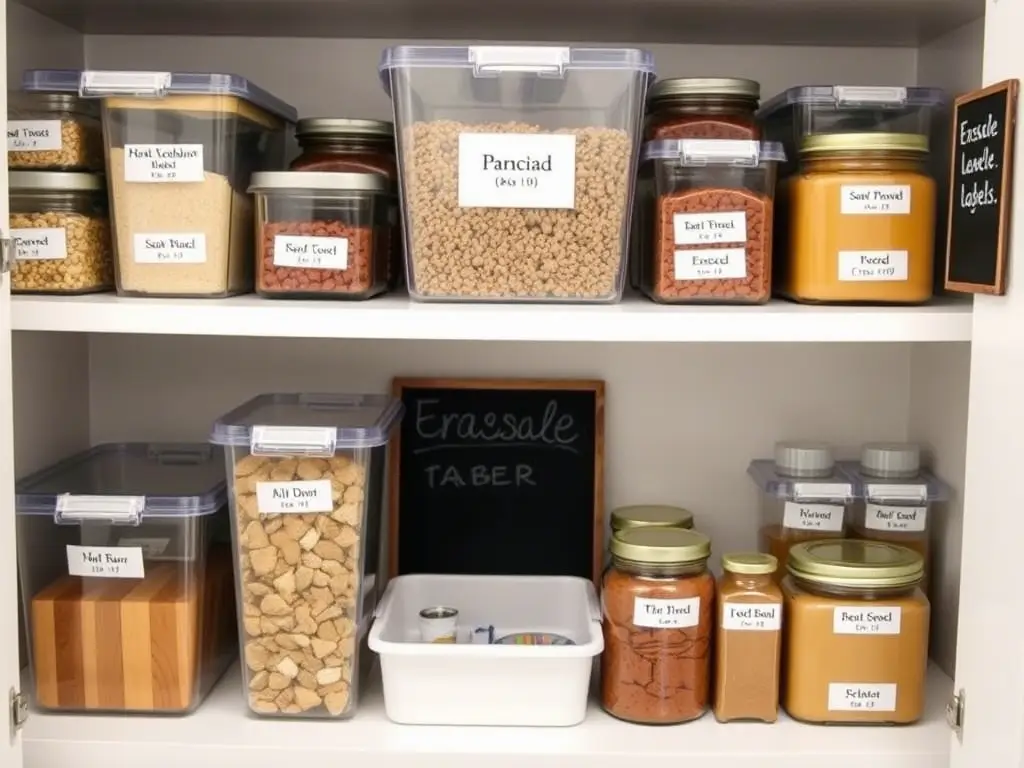
3. Install Adjustable Shelving
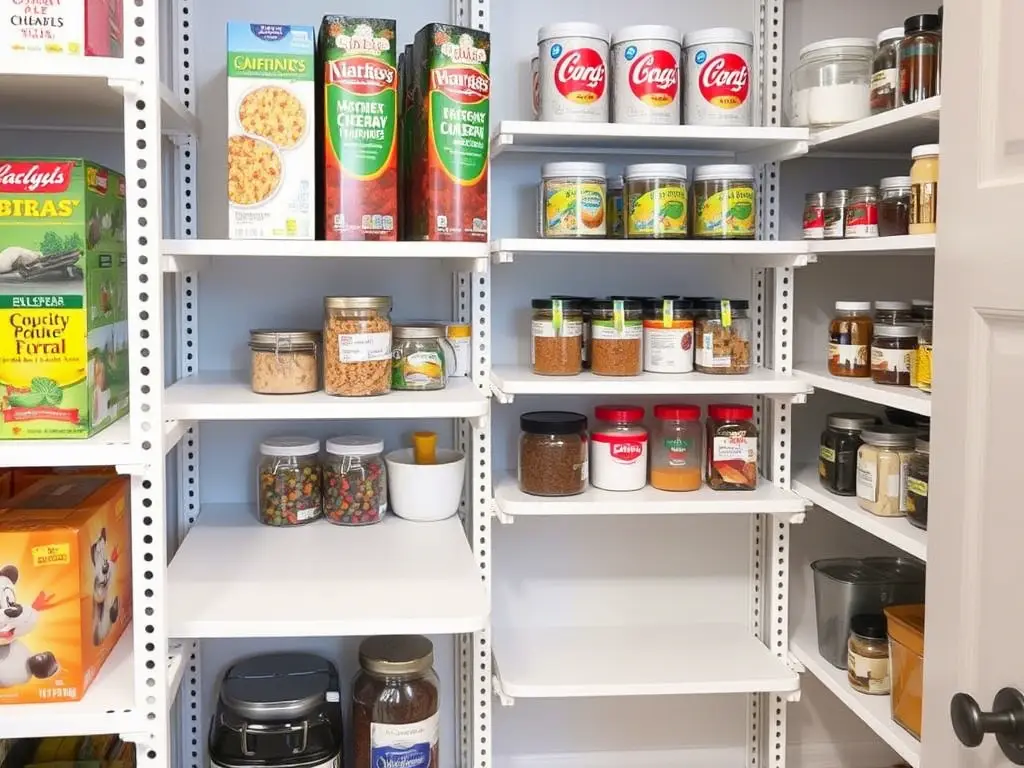
Adjustable shelving gives you the freedom to customize your storage based on your needs. You can accommodate tall cereal boxes, short spice jars, and medium-sized canned goods with ease. This adaptability ensures no shelf space goes unused, making your pantry more efficient.
4. Utilize Over-the-Door Storage
The back of your pantry door is prime real estate for additional storage. Add an over-the-door rack to hold spices, condiments, snacks, or even cleaning supplies. This solution maximizes vertical space and keeps frequently used items within arm’s reach.
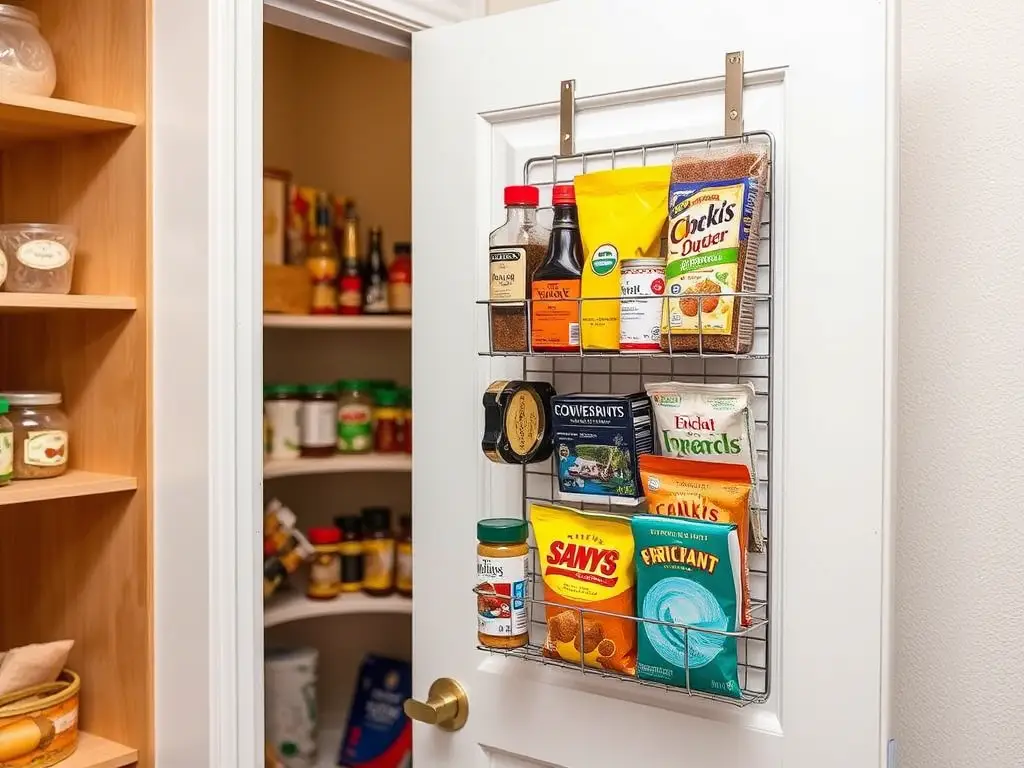
5. Use Tiered Shelving
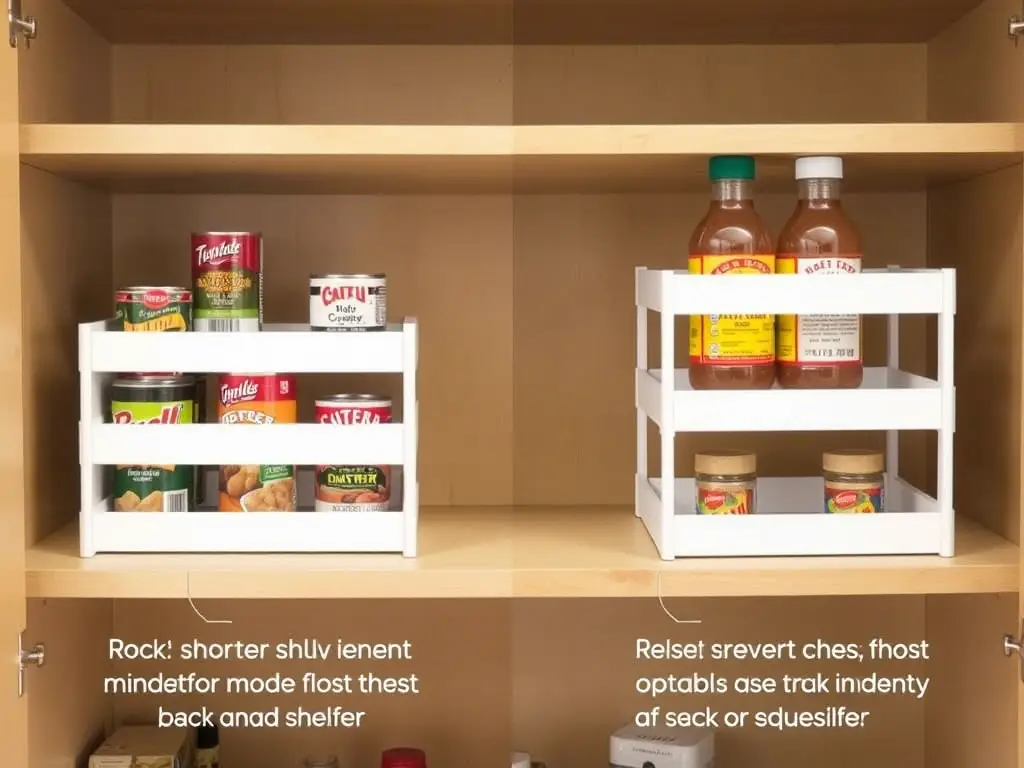
Tiered shelves (also known as risers) are perfect for keeping smaller items visible and accessible. Place them on existing shelves to elevate shorter items like canned goods, seasoning bottles, or snack packs. This prevents items from getting lost in the back and makes inventory checks quick and easy.
6. Incorporate Lazy Susans
Lazy Susans are excellent tools for optimizing corner spaces or deep shelves. Simply spin the turntable to access oils, vinegars, sauces, or snack jars stored at the edges. It’s a simple yet effective way to eliminate digging through cluttered shelves.
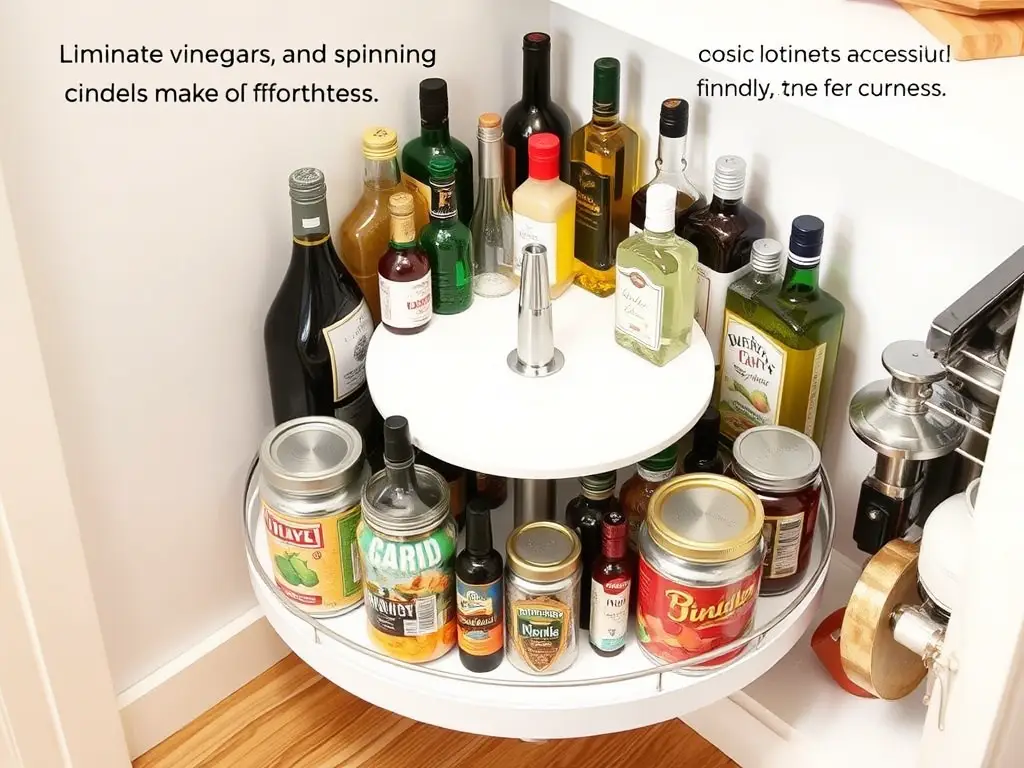
7. Group Similar Items Together

Categorizing your pantry items into groups—such as baking supplies, snacks, canned goods, breakfast essentials, and beverages—creates order and simplifies meal prep. Keep all baking ingredients together, snacks in one section, and so on. This methodical approach saves time and reduces frustration.
8. Use Stackable Bins and Baskets
Stackable bins and baskets are lifesavers for maximizing vertical space while keeping similar items grouped together. Choose ones with handles for easy transport and accessibility. For example, use baskets for snacks, bins for grains, and shallow trays for tea bags or seasoning packets.
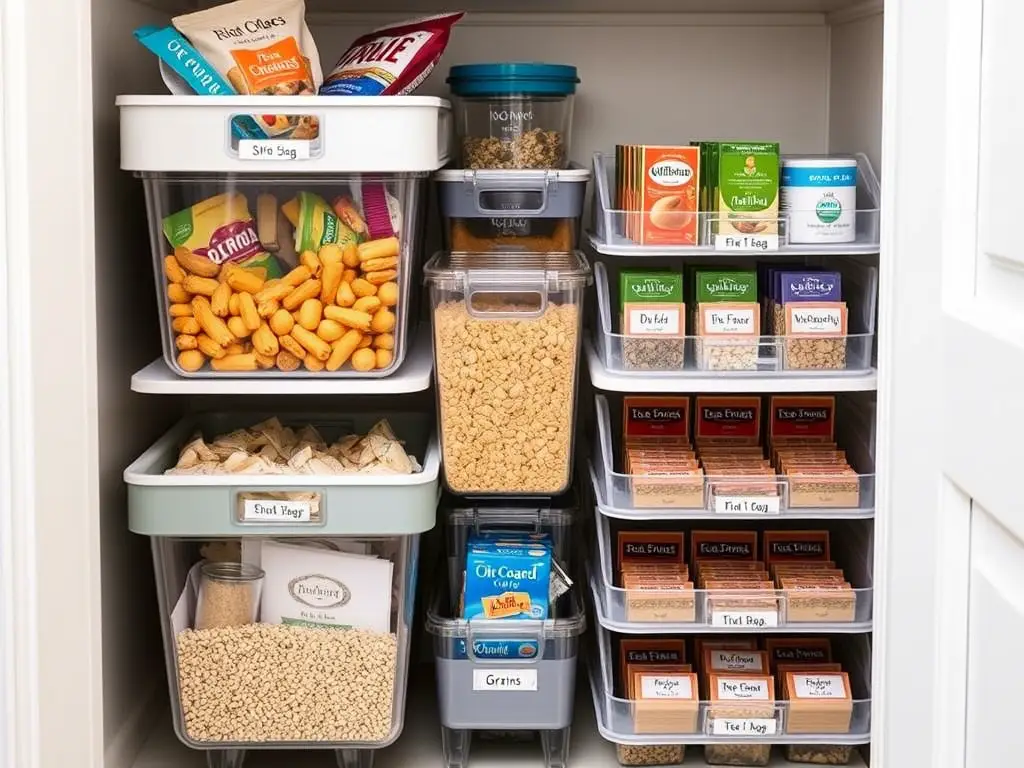
9. Hang Hooks for Extra Storage

Hooks installed on pantry walls or doors provide extra storage options. Hang aprons, reusable grocery bags, lightweight baskets, or even measuring cups. This frees up valuable shelf space and keeps often-used items readily available.
10. Invest in Sliding Drawers
Deep shelves can be challenging to navigate, especially when items get pushed to the back. Sliding drawers solve this problem by bringing contents closer to you. Use them for storing snacks, grains, pasta, or any bulky items that tend to get buried.

11. Utilize Wall Space with Pegboards

Pegboards are versatile organizers that transform blank wall space into functional storage. Hang kitchen tools, measuring spoons, small baskets, or even decorative jars. This not only clears up shelf space but also adds a personalized touch to your pantry design.
12. Store Bulk Items in Lower Cabinets
Lower cabinets are ideal for storing heavy bulk items like flour, rice, pet food, or large bags of chips. Use sturdy bins with built-in scoopers or pour spouts for convenience. This setup keeps bulk items contained and prevents spills.

13. Use Magazine Holders for Storing Canned Goods
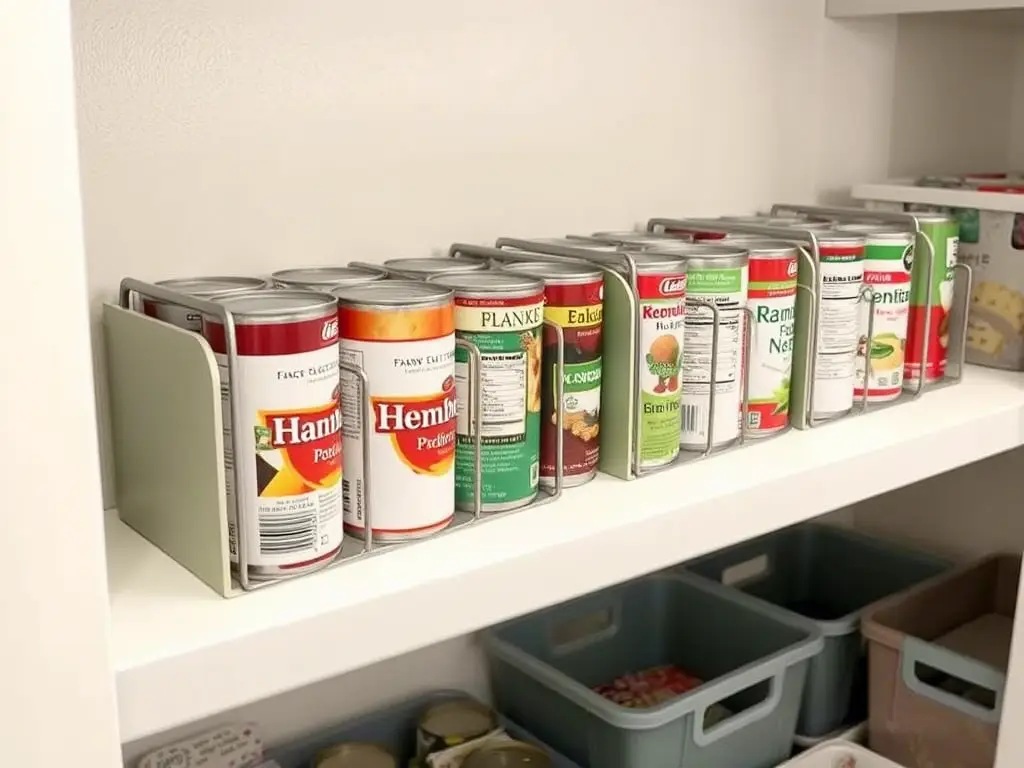
Repurpose magazine holders to store canned goods horizontally. This clever hack allows you to see each can’s label and prevents cans from rolling around or stacking precariously. It’s particularly useful for narrow shelves or awkward corners.
14. Install a Chalkboard or Whiteboard
A chalkboard or whiteboard inside your pantry serves multiple purposes. Use it to jot down grocery lists, meal plans, or reminders about pantry inventory. It’s a practical tool that keeps you organized and prevents last-minute trips to the store.

15. Use Drawer Dividers for Small Items

If your pantry includes drawers, invest in dividers to separate small items like tea bags, seasoning packets, granola bars, or single-serving snacks. This prevents items from shifting around and makes it easier to locate specific products.
16. Repurpose Shoe Organizers
Hanging shoe organizers aren’t just for shoes—they’re fantastic for organizing small pantry items too! Attach one to the back of the pantry door to store spice packets, condiments, snacks, or even sandwich bags. Each pocket provides a dedicated space for individual items.

17. Add LED Lighting for Visibility

Good lighting is crucial for navigating your pantry efficiently. Install LED strip lights under shelves or battery-powered puck lights in dark corners. Proper illumination ensures you never miss an item hiding in the shadows.
18. Use a Step Stool for Hard-to-Reach Areas
Keep a foldable step stool nearby to safely access high shelves. This eliminates the need to strain or climb onto counters, ensuring safety while retrieving items stored out of reach.
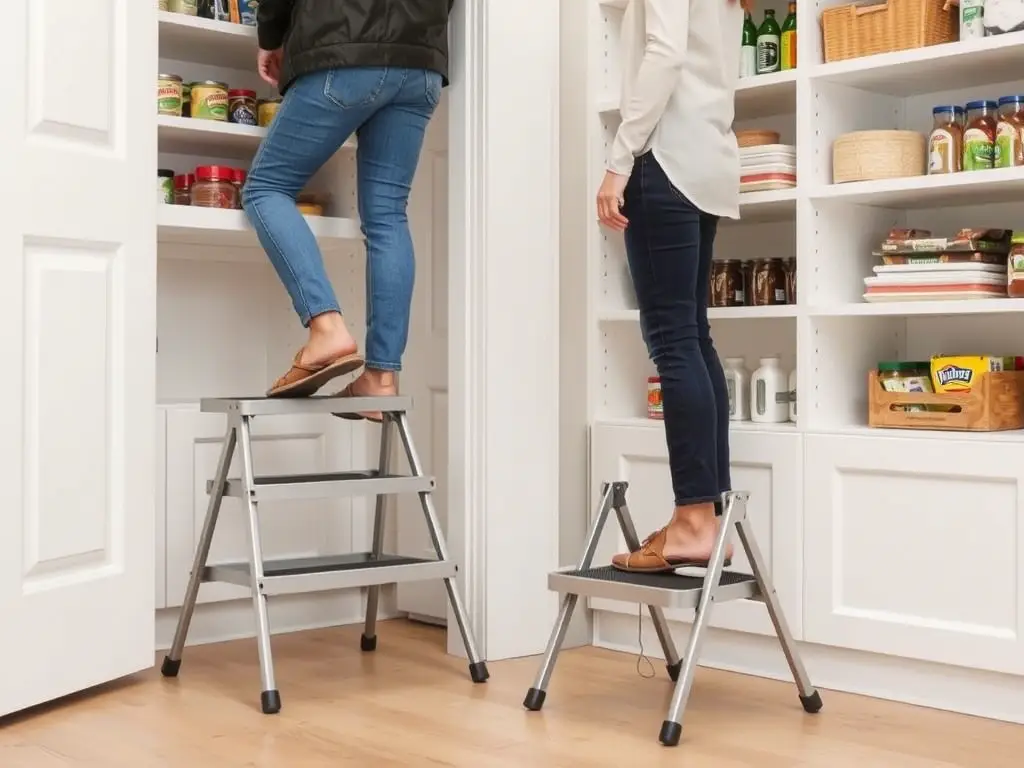
19. Rotate Stock to Prevent Waste
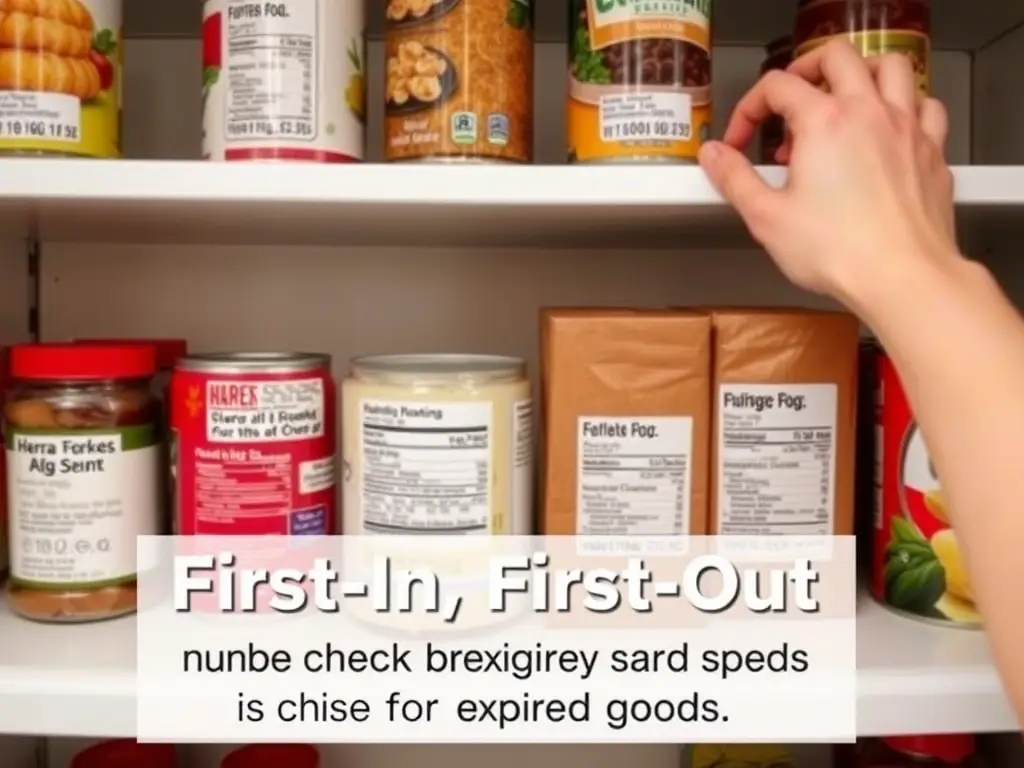
Adopting a “first-in, first-out” system is key to minimizing food waste. Always place newer items behind older ones so they’re used up before their expiration dates. Regularly check for expired goods and dispose of them promptly.
20. Regularly Declutter and Reorganize
An organized pantry requires ongoing maintenance. Set aside time every few months to declutter, wipe down shelves, and reevaluate your storage solutions. Remove expired items, donate unopened non-perishables you won’t use, and reassess whether your current setup still meets your needs.
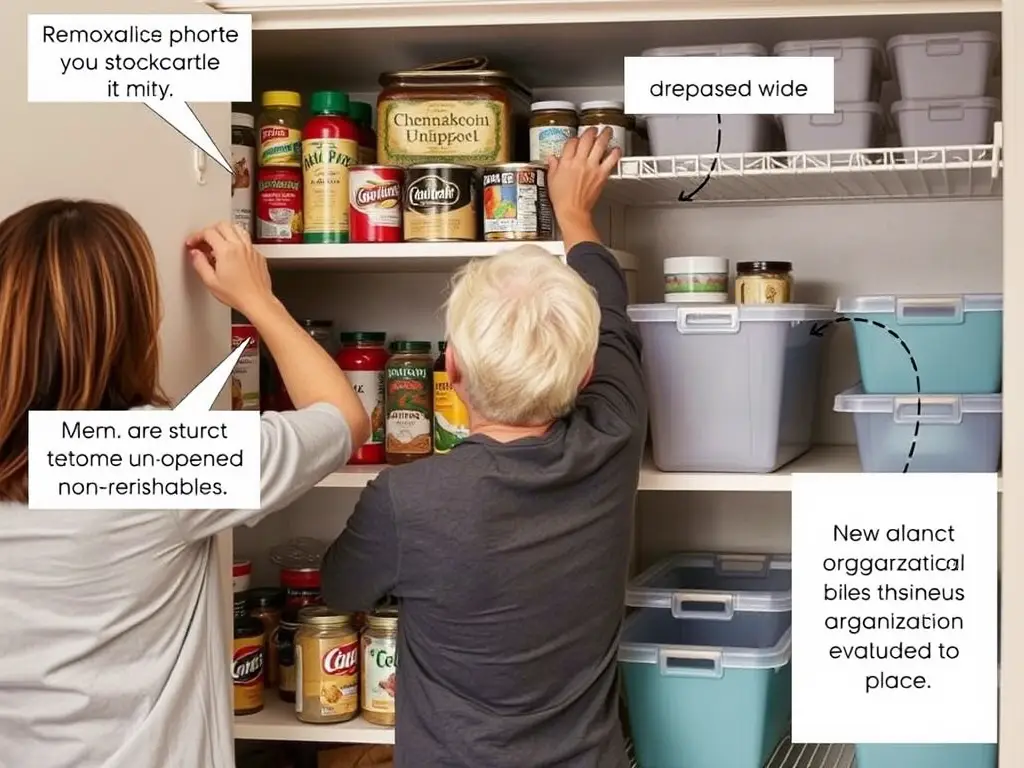
You Might Also Like:
- Easy DIY Fall Decor: Craft Cozy Autumn Vibes on a Budget!
- Simple Wall Painting Ideas: Transform Your Home in Minutes!
- Upcycling Furniture 101: Easy DIY Ideas for Beginners
Final Thoughts
By implementing these 20 smart pantry organization hacks, you’ll create a functional, visually appealing space that streamlines your cooking routine and minimizes waste. From clear containers and tiered shelving to creative repurposing ideas, there’s something here for every type of pantry. With a little effort and creativity, your walk-in pantry can become the envy of your home—and a joy to use every day!
FAQ’s
How do I keep my pantry from getting cluttered?
Regularly declutter, use labeled storage, and stick to a consistent organization system to prevent mess.
What is the best way to store dry goods?
Airtight clear containers help keep dry goods fresh and visible, reducing waste.
How can I maximize a small walk-in pantry?
Utilize vertical space, over-the-door storage, stackable bins, and hanging racks to maximize storage.
How often should I reorganize my pantry?
Reorganize every 3–6 months to keep things in order and avoid expired items.
By implementing these smart organization hacks, you can create a functional, clutter-free walk-in pantry that enhances your kitchen efficiency. Happy organizing!